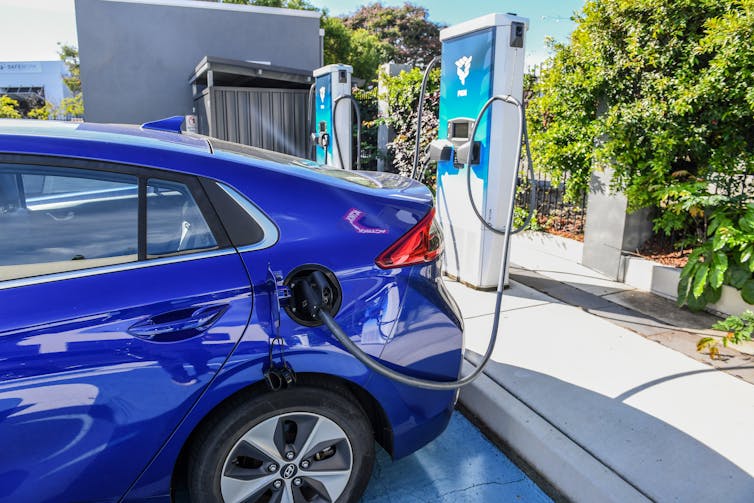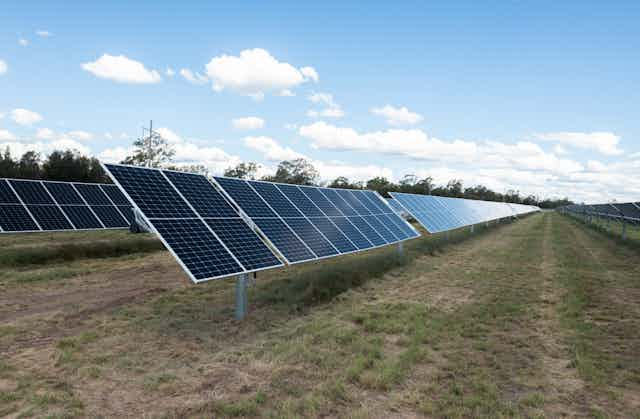The marks of industry have forever changed the Hunter Valley in New South Wales, edged by the Blue Mountains to the south and ancient rainforests to the north. Coal has been mined here for more than 200 years, providing generations of people with good livelihoods and lives. But the end of coal in the Hunter does not spell the end of communities. Quite the opposite.
The Hunter is developing a clean manufacturing precinct, and state and federal governments are investing heavily in the effort. Projects to create hydrogen and renewable energy to replace coal and gas are underway.
At Kooragang Island, just north of Newcastle, Orica and the Australian government are working together to change what the exhaust stacks at three nitric acid manufacturing plants put into the air. Nitrous oxide, a greenhouse gas now released directly into the atmosphere, is being converted into nitrogen and oxygen, and emissions at these plants are set to halve.
In the Hunter-Central Coast Renewable Energy Zone around Muswellbrook and Newcastle, the Waratah Super Battery, likely to be the Southern Hemisphere’s largest standby network battery, is among the renewable energy projects that will replace the Eraring coal-fired power station when it closes in 2025. Even in the Hunter, with its long fossil fuel history, change is in the air.
Pessimism abounds about the world’s capacity to solve climate change, but as chief executive of Climateworks Centre, which works with governments, companies, regulators and investors to create pathways to net zero emissions, I see evidence every day of people doing hard practical work to bring their organisations into line with our national and global climate goals.
The road is long and time is short, but our pace is quickening. The price of renewables is falling, coal-fired power plants are sunsetting sooner, hydrogen technology is progressing. And as industries and economies change, so too will minds.
The ambition of climate action must continue to aim at a global temperature increase of no more than 1.5°C because every tenth of a degree of warming brings exponentially worse outcomes. Last week, the US Treasury advised that financial institutions’ net zero plans should be in line with a 1.5°C pathway.
In 2020 when my organisation’s climate modelling with CSIRO showed the first 1.5°C-aligned path to net zero for Australia, the Paris Agreement, which committed the world to strive for such a pathway, was five years old. The progress in technology in that time demonstrated potential to bring emissions to net zero over a decade faster than previously shown. Today, our modelling consistently identifies a 1.5°C-aligned pathway. But implementation needs to pick up speed.

Australia’s emissions are roughly a third from electricity, a third from mining, manufacturing, construction and buildings, and a third from transport and agriculture. So the path is clear.
Switch anything that runs on fossil fuels to electricity or, in a few cases, to a zero-emissions substitute such as green hydrogen or biofuel. Generate all electricity from renewable sources, and sequester emissions that can’t be eliminated. In short, it’s a technology upgrade across the economy plus investment in nature-based solutions that protect and restore ecosystems and sustainably manage agricultural land and forests.
At the same time, improve energy efficiency, a stealthy superpower at our disposal. Already, digitalisation is making everything from home thermostats to long-haul trucking more efficient. More stars are cropping up on home appliance energy rating labels.
Building standards are improving home energy performance. Victoria has said all new homes will be fully electric from next year. With a clear view of what is needed to bring homes to net zero, other states and the federal government can follow its lead.
As for electrification, even some of the trickiest switches from fossil fuels to renewable energy are underway. The Australian Industrial Energy Transitions Initiative, a group of heavy industry and business leaders co-convened by Climateworks Centre, shows iron and steel, aluminium and chemical supply chains, home to many of Australia’s “hard-to-abate” emissions, can cut between 96% and 99% of emissions by 2050, while increasing production to meet the needs of a net-zero global economy.
Read more: Too hard basket: why climate change is defeating our political system
Until recently, electric and renewable processes simply could not generate as much heat as fossil fuels to power these industries. Take aluminium, which begins as bauxite, a reddish-brown rock very common in Australia.
To be transformed into aluminium, bauxite must undergo a process called digestion at around 200°C, followed by calcination at around 1,000°C, before it’s smelted into its final silvery state.
For a long time, no renewable process could get anywhere near 1,000°C. But near Gladstone earlier this year the world’s first hydrogen calcination demonstration pilot was announced at Rio Tinto’s Yarwun Alumina Refinery in Queensland. The pilot, funded by the Australian Renewable Energy Agency, aims to prove hydrogen calcination is viable for industrial use at scale.

Success would be no small thing; this one industrial process alone is responsible for 1% of Australia’s greenhouse gas emissions. Decarbonising both calcination and digestion would cut up to three times that amount.
Yet we are out of time to work on all this incrementally. A few big changes are needed now. One is to deploy technologies across entire supply chains and across new, net zero precincts, with companies and sectors pulling together to achieve more than they can on their own.
Over the next year the federal government is also developing net zero plans for six sectors: electricity and energy, industry, resources, the built environment, agriculture, and land transport. Done properly, they will be a big deal in getting us to net zero.
A holistic approach can solve multiple goals at once: electrify, build renewable power, support communities and protect nature. This must occur in the industrial regions that power Australia’s economy. Five of them – the Pilbara, Kwinana, Hunter, Illawarra and Gladstone – contribute more than $160 billion to Australia’s gross domestic product (GDP), the equivalent of nearly half the value of Australia’s exported goods.
Industrial facilities in these regions can be brought together within a renewable energy industrial precinct. The idea is simple – supercharge industrial areas with plenty of renewable energy, green hydrogen, shared infrastructure, labour and knowledge. Coordinate the public policy and investment that will attract further private sector investment, supporting the transition of the existing and creation of the new at the same time.
These precincts will provide a path to prosperity for workers and industries, built on demand for the renewable energy that will underpin Australia’s ambitions to be an energy superpower produces green iron, green hydrogen and other products the world urgently wants.
The Net Zero Authority – created in July to help “seize the opportunities of Australia’s net zero transformation” – is the layer of connective tissue that will help these precincts succeed. The Authority will coordinate policies to support regions and communities to attract clean energy industries, and help investors and companies to take up net zero opportunities.
Beyond industry, all Australians have a role to play, in our actions and in our minds. At Climateworks we say, “start at the end goal”. Imagine a prosperous net zero society 30 years from now.
Huge industrial regions feature battery blocks, not exhaust stacks. Cities hum, more quietly than today, with electric vehicles. Homes are warmed and cooled by the power of the sun, and we breathe fresh air.
Once we put ourselves in that future, and look around at the infrastructure and relationships needed to create it, the rest of the equation can – and I believe will – be solved.
We are still far from that ideal, but the turning point, when it comes, will be swift. Australia has an enormous opportunity in decarbonising quickly, in a world that we know wants the same.

